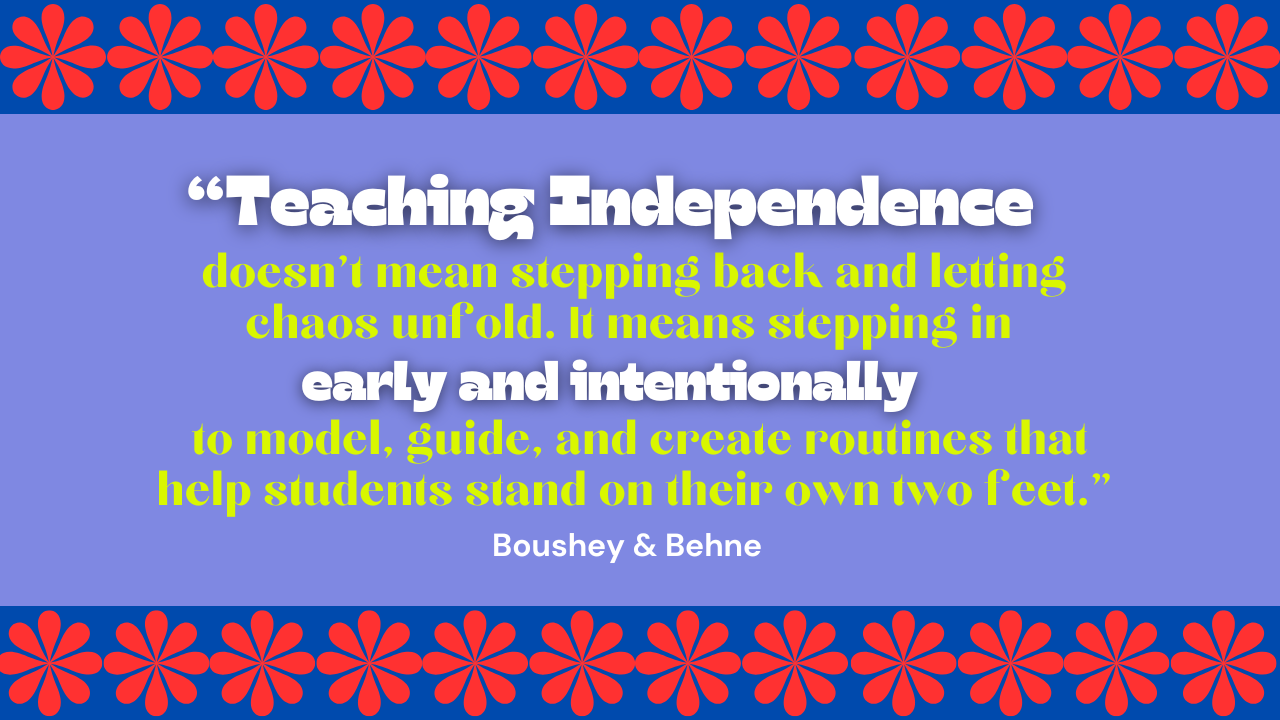
This week, in the United States, the Fourth of July brings fireworks, parades, and a whole lot of red, white, and blue. It’s a holiday rooted in the idea of independence—of forging identity, making choices, and standing on one’s own. But if you zoom out, independence isn’t just a national celebration; it’s a universal concept. And as educators, it’s something we work on daily with our students.
Whether you’re teaching in the U.S. or elsewhere in the world, you’ve probably spent part of your year helping students learn how to do something without you. And not just for the sake of saving time or managing the room, but because independence is a life skill. It’s about agency. Confidence. Ownership. And yes, sometimes a little trial and error.
Teaching independence doesn’t mean stepping back and letting chaos unfold. It means stepping in early and intentionally to model, guide, and create routines that help students stand on their own two feet.
When we teach students how to follow a routine, check their work, manage materials, or regulate their emotions, we’re not just aiming for smoother transitions or more efficient work time (though those are great perks). We’re giving them the tools to navigate school and life more confidently.
So whether your country is celebrating independence this week or not, it’s a perfect time to reflect on how we’re building it in our classrooms. Are we offering students opportunities to make choices? Are we giving them space to wrestle with something tricky before stepping in? Are we reinforcing the belief that they can do hard things on their own?
Because that’s the heart of it. Independence, no matter where or how it’s celebrated, is really about trust. Trusting people, especially young ones, to rise to the occasion when given the right support.
So here’s to sparklers, student agency, and the beauty of watching learners light up when they realize they can do it themselves.
Happy Fourth (if you’re celebrating), and happy Friday to all.
This article might be missing links that were included at the time of publication.

